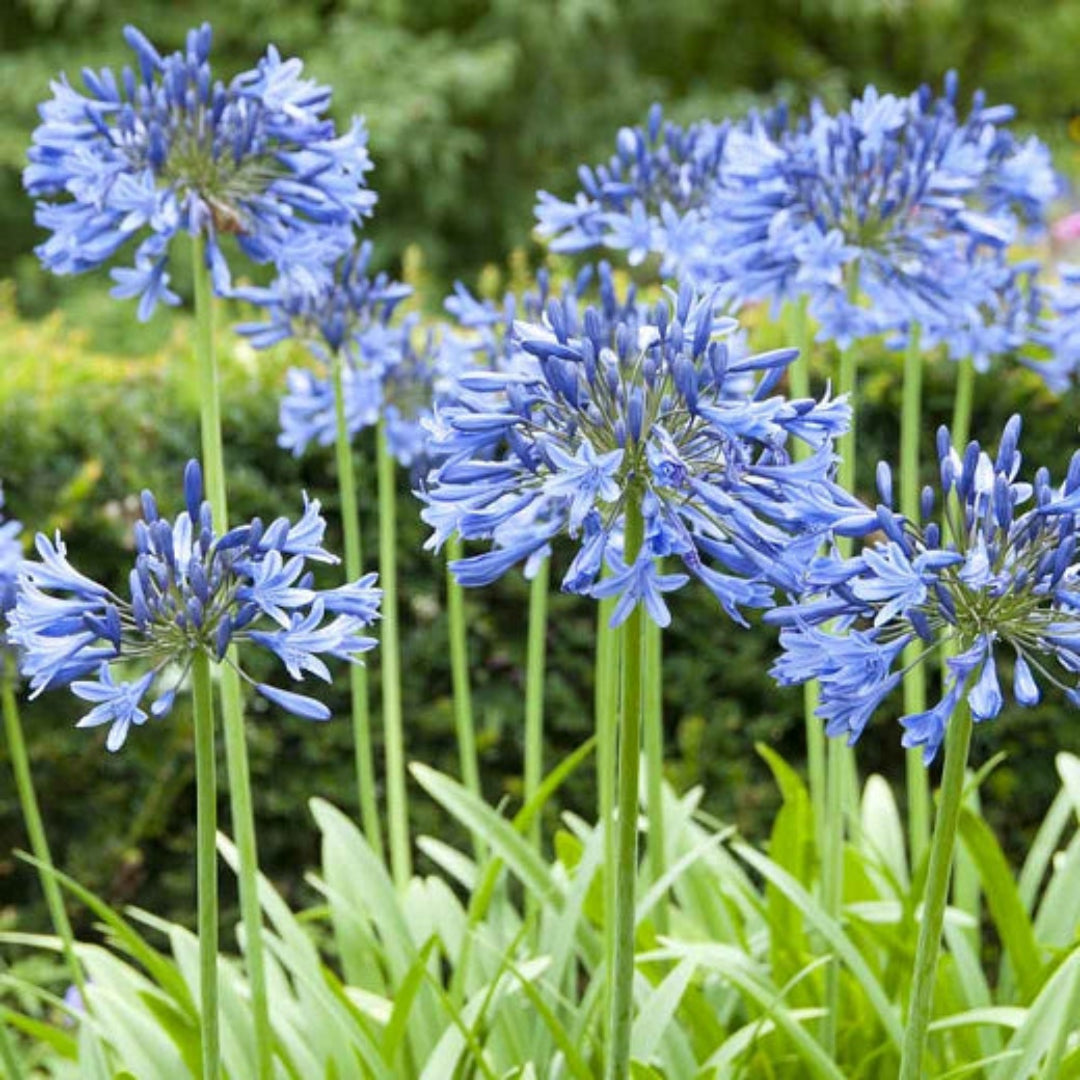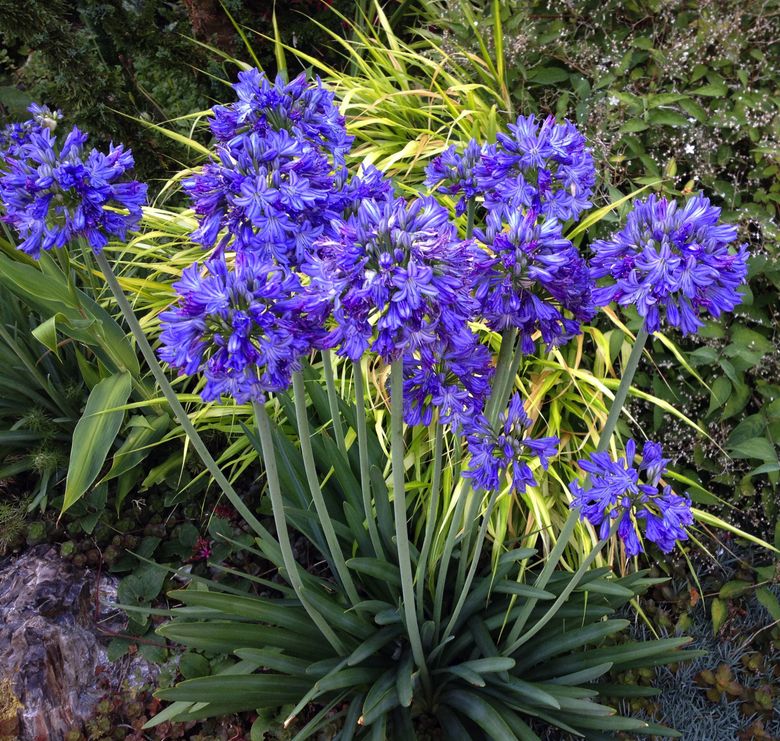How to Plant and Maintain Agapanthus in Your Garden
How to Plant and Maintain Agapanthus in Your Garden
Blog Article
Grasping the Art of Agapanthus Care: Essential Actions for Healthy Growth and Vibrant Flowers
In the realm of cultivation, the farming of agapanthus stands as a rewarding venture for those that look for to nurture these classy blooming plants. With their striking flowers and graceful foliage, agapanthus has caught the focus of gardeners worldwide. Nonetheless, achieving optimal development and vivid blooms calls for a nuanced technique that includes numerous essential steps. From selecting the best selection to grasping pruning methods, the trip towards growing thriving agapanthus plants is multifaceted and holds the key to unlocking the complete possibility of these botanical gems.

Choosing the Right Agapanthus Selection

When picking the best Agapanthus variety for your yard, take into consideration aspects such as environment suitability, blossom color, and development habit. Furthermore, take into consideration the environment in your area to make sure the Agapanthus range you choose can thrive in your specific conditions. Understanding the development routine of various Agapanthus ranges is vital for appropriate positioning within your garden.
Perfect Growing Conditions
Considering the optimal ecological requirements is vital for effective Agapanthus cultivation. Agapanthus plants are sensitive to cold temperatures and should be protected from frost during winter season months.
To guarantee healthy development and vivid blossoms, plant Agapanthus bulbs at a depth of concerning 2-4 inches and space them 8-12 inches apart. Mulching around the base of the plants aids maintain wetness and suppresses weed growth.
Watering and Feeding Tips
Maintaining appropriate dampness degrees and giving necessary nutrients are crucial aspects in the treatment regimen for Agapanthus plants. When it comes to sprinkling Agapanthus, it is vital to strike a balance. These plants favor regularly damp dirt but are vulnerable to root rot if overwatered.
Feeding Agapanthus is important for advertising healthy development and respected blooms. Apply a balanced plant food, such as a 10-10-10 formula, in the early spring as brand-new growth arises. Repeat this application every 6-8 weeks throughout the growing period. Avoid extreme fertilizing, as it can lead to rich foliage at the expenditure of flowers. Always follow the producer's guidelines for correct dilution and application techniques. By complying with these watering and feeding pointers, you can guarantee your Agapanthus plants grow and generate vivid, resilient flowers.
Trimming Methods for Agapanthus
Trimming Agapanthus plants at the proper times and with appropriate methods is vital for keeping look at here their health and wellness and advertising ideal growth and flowering. The ideal time to prune Agapanthus is in late winter or early spring before brand-new development arises. Start by removing any dead or yellowing leaves near the base of the plant. Cut them as close to the ground as feasible without harming the arising shoots.
For flowered stems, wait up until the blooms have actually perished and after that cut them back to the base. This not only cleans up the plant's look yet additionally motivates the development of brand-new flower buds. Deadheading invested flowers can additionally redirect the plant's power right into creating even more flowers instead than establishing seeds. Nonetheless, if you wish to gather seeds for proliferation, leave some blossoms to dry and mature on the plant.
Keep in mind to make use of clean, sharp tools to make precise cuts and lower the threat of presenting illness. Agapanthus. Normal pruning will certainly aid maintain your Agapanthus looking healthy and balanced and neat while making sure a bountiful screen of stunning blossoms
Dealing With Common Parasites and Diseases
After guaranteeing appropriate pruning methods for Agapanthus, it is crucial to address usual parasites and conditions that can influence the health and vitality of these plants. One typical parasite that influences Agapanthus is the Agapanthus gall midget.
Another common concern is fungal leaf place, which provides as dark sores on the leaves. To avoid fungal illness, make certain excellent air circulation around the plants, stay clear of overhanging watering, and remove any kind of contaminated leaves immediately. In addition, Agapanthus plants can deal with root rot if they are planted in inadequately draining pipes dirt. To stop this, plant Agapanthus in well-draining dirt and stay clear of overwatering. By being attentive and taking punctual action against pests and illness, you can help your Agapanthus plants grow and generate lively flowers.

Final Thought
Finally, understanding the art of agapanthus care involves selecting the best variety, offering perfect growing problems, correct watering and feeding, proper pruning techniques, and resolving typical insects and diseases. By following these important steps, my review here you can make certain healthy growth and vivid blooms for your agapanthus plants. Bear in mind to regularly check and keep your plants to advertise their total wellness and longevity.
To make sure healthy growth and vibrant blooms, plant Agapanthus light bulbs at a depth of about 2-4 inches and space them 8-12 inches apart. By adhering to these watering and feeding pointers, you can guarantee your Agapanthus plants thrive and generate vivid, resilient blossoms.
One common insect that impacts Agapanthus is the Agapanthus gall midget. Furthermore, Agapanthus plants can suffer from origin rot if they are grown in improperly draining soil. By following these essential actions, you can official website guarantee healthy and balanced growth and dynamic flowers for your agapanthus plants.
Report this page